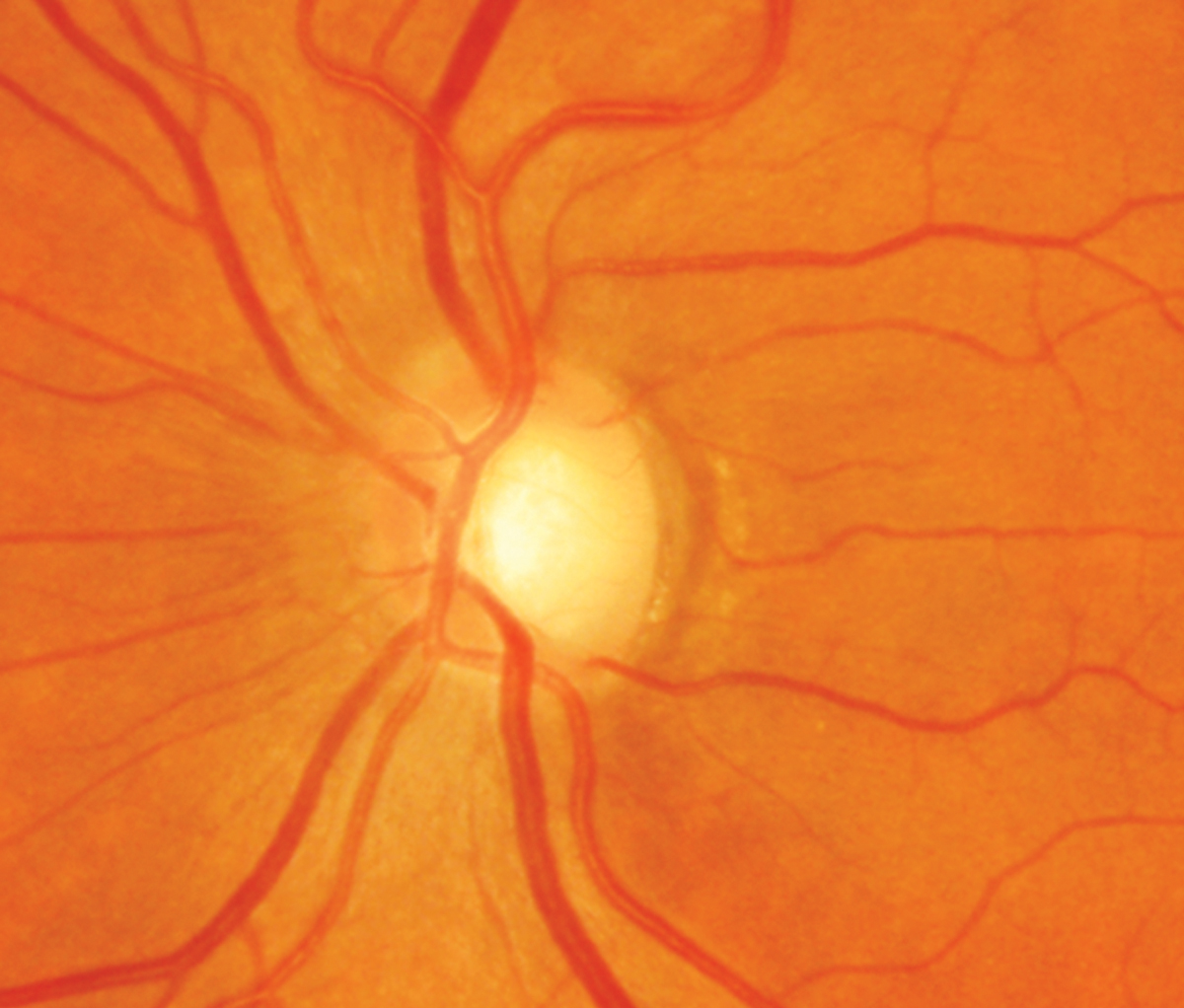 |
|
Optic nerve head cupping ad RNFL thinning may be indicators of a general neurodegenerative process that also encompasses dementia-like changes. Photo: Sarah B. Klein, OD. Click image to enlarge. |
Recognizing that some neurodegenerative diseases share pathophysiological processes with certain eye disorders, researchers from Korea recently conducted a study to elucidate any risk of dementia for those who had been newly diagnosed with glaucoma. Included were a total 788,961 individuals aged 45 or older using a nationwide cohort, with data obtained from the Korean National Health Insurance Service. These people were diagnosed with glaucoma in 2006 and had neither glaucoma nor dementia between 2002 and 2005.
Tracked for diagnosis of glaucoma and/or dementia from January 2006 to December 2017, the retrospective review of claims data found that 7.0% of all participants developed dementia, with an average onset after 7.4 years. Risk of dementia development was higher for those who newly diagnosed with glaucoma, even after adjusting for factors like age, sex, smoking status, visual acuity (VA), and more.
This pronounced observation was particularly noted to apply to Alzheimer’s disease (AD), but no such association existed for glaucoma patients with vascular dementia. This risk was additionally higher for older glaucoma patients. The incidence of dementia was 1.9 times higher in those with newly diagnosed glaucoma when compared to those who were glaucoma-free over the course of 12 years.
The researchers speculate that glaucoma in older individuals may be linked to an increased CNS injury susceptibility (like neurodegeneration) which could affect dementia development, hence the association between the two age-related diseases. More interestingly, the researchers also observed that dementia risk in individuals with newly diagnosed glaucoma was greater for the subgroup with good visual acuity. While the interpretation of this point is challenging because many factors contribute to VA, they believe that “this observation suggests that monitoring for dementia may be more important in individuals with glaucoma with good vision.”
There is also a proposed rationale for an observed difference in association between dementia subgroups. AD and vascular dementia (VD) differ in many ways, including pathophysiological mechanisms, the brain regions damaged and risk factors associated with each. As such, the association between their risk of development along glaucoma development could be different as well.
As for the glaucoma association with AD, the researchers, in their paper on the study in Ophthalmology, point to several prior studies demonstrating that glaucoma and dementia share pathophysiological properties. The accumulation of amyloid-β plaques in AD has been similarly seen in mice with AD showing overexpressed amyloid precursor protein, hyperphosphorylated tau deposit and apoptosis in different retinal layers, including the RGC layer and nerve fiber layer, both of which are affected in glaucoma.
Underlining this connection is the authors of the study’s view about their findings. They posit that “although a detailed mechanism supporting the possible link between the two is yet to be discovered, this provides evidence that glaucoma and dementia may share a common pathogenesis that triggers the neurodegenerative process.” Under conditions in which RGCs are vulnerable to damage or part of the entire CNS undergoes degenerative changes, the two conditions may influence or overlap, triggering glaucoma and dementia development. “In this situation, ONH cupping and RNFL thinning in glaucoma may be indicators of a general neurodegenerative process, and glaucoma may be associated with dementia regardless of subtype,” they wrote.
However, they do note that the stronger association between glaucoma and AD found in their results vs. other studies may reflect differences in patient ethnicity. In Korean populations, for instance, normal-tension glaucoma is more prevalent than the open-angle form and such distinctions must be accounted for in future studies.
Park DY, Kim M, Bae Y, Jang H, Lim DH. Risk of dementia in newly diagnosed glaucoma: a nationwide cohort study in Korea. Ophthalmology. 2023. [Epub ahead of print]. |


